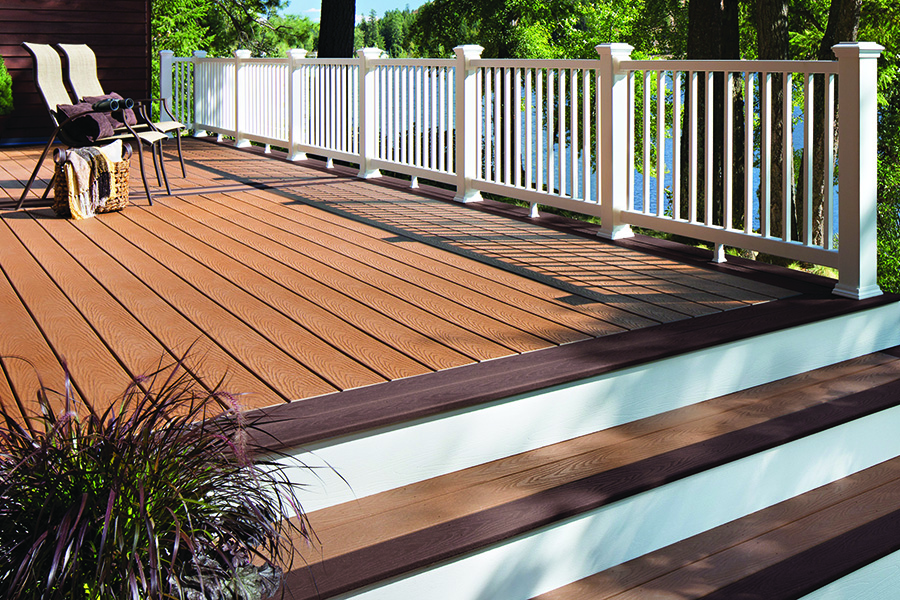Railing: A SKU Nightmare
At one time, kits that packaged all the parts and pieces for a section of railing in one box looked to be a good way of simplifying life for both contractors and retailers. But builders couldn’t stop mixing and matching the growing number of rail components on the market to deliver a unique look to their customers.
“Over the last few years, all of the manufacturers just kept adopting more and more and more,” Daingerfield says. “We like selling things off the shelf, so the kit factor works really well. If you need a 6-foot railing, here’s a box, there’s everything in it.
“But in this continuing desire to give everyone every option every time on every item,” he points out, “we’re seeing it become more of a component business, which does increase the flexibility but it makes it a much harder sale because you’re looking at all these options every time.”
More options mean more SKUs and a space and inventory crunch for lumberyards. Builders who for years were satisfied with plain wood railing systems now have access to composite, vinyl, and aluminum parts; cable railing; and caps with solar-powered LED lights.
What has happened, says Steven Van Kouteren of Principia, is that lumber retailers have been pushing the problem back on wholesale distributors. Rather than stocking the hundreds of items they might potentially need to fill orders, retailers are increasingly willing to ask wholesalers to put the packages together.
“If you’re risk-averse and you want to hold onto your cash, you start special ordering a lot of stuff, but then your margins go down,” Van Kouteren says. “So there’s a balance between how much money you want to tie up in inventory and the risk of making a mistake and buying product that doesn’t sell versus giving up margin and freeing up your cash and special ordering from the wholesaler when the order comes in. That’s the decision that dealers are trying to make.”
And dealers don’t always like it.
“I think we keep adding complexity in the pursuit of trying to get every sale,” Daingerfield says. “I think Henry Ford had it right when he said that you can have any color you want as long as it’s black.
“Every change [manufacturers have] made has put us in a position where we’re going to shift more of the cost to the wholesaler,” he says. “I can’t keep all of these things anymore. There are just too many options. It’s going to become much more of a special-order business. It will put a lot more pressure on the wholesalers.”


